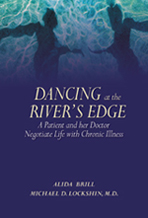Measures of Time – Chapter 1

It’s easy to think about how to measure time—until you actually think about it. What scale should one use when measuring a human life? In the Western world our scales are linear and decimal. We speak about orders of magnitude, multiples of ten—tenths and ones and tens and hundreds and thousands. But a concept of 10 or 100 or 1000 or 10,000 days fits to no human scale and brings no universally recognizable image to mind. We do have concepts, likedecadesorgenerations, that describe the non-decimal pace of human life, but, lacking a biology-based scale of time, we tend not to think in these terms.
The ancient Mayans perceived time as a series of recurring cycles of periods within the human experience. To them akin(pronounced k-e-e-n) was a day,uinal(pronounced we-e-n-al) twenty days,tun(pronounced t-oo-n) approximately one year, andkatun(pronounced ka-t-oo-n), about twenty years. The world is renewed in abaktun(pronounced bok-t-oo-n) lasting four hundred years. On the scale of akatunpeople marry, achieve, see children grow, watch parents die, do or do not become disabled. Thekatunis the measure of time that describes the intersections of the otherwise separate worlds in which Alida and I live.
Biology and medicine have one scale for instant time, a nanosecond, a second, a minute or two––a fainting episode, a heart rhythm disturbance, a stroke, a convulsion, a sudden fall. One moment you are well, the next you are ill, never the other way around. This scale goes only in one direction: healing does not occur so fast.
Then there is the kind of time you measure with clocks, minutes and hours. This scale is bi-directional, pain or fever comes or goes, you come to the decision that you are or are not ill, that you will or will not call the doctor; the doctor decides that it is or is not necessary to act. A third scale, calendar time, measures time in months, seasons, and years: this new medicine is or is not going to work, you will or will not take that future trip, you will or will not attempt or achieve that future goal. Beyond that are the still longer periods that chroniclers know.
Time scales, for the most part, for most people, are irrelevant in day-to-day life. People interweave their different scales effortlessly, unconsciously, instinctively, rarely having to articulate and plan accordingly. The telephone rings, you answer – instant time. The business meeting takes place next week. Your child will graduate in three years. Determining such time scales is automatic. For most people it is almost unnatural actually to think about the many scales of time in which we operate out our lives.
But patients, unbelieving at first, grudgingly accepting later on, do begin to conceptualize greater, more abstract notions of time: instant, clock, and calendar,kin,uinal,tunandkatun. If patients do not develop this construct, their doctors do it for them. This symptom, this pain, this fever is lethal! We deal with it now, in instant time! This other symptom, let’s give it a few days, it probably is going to go away anyway, or let’s try this simple thing to see if it works (“Take two aspirin and call me in the morning”), clock time. And the third thing, well, you can take that trip in September if we do this, but at such-and-such a cost in side effects or risk, or, if you stay here I can do something else, less cost and less risk – calendar time. Let’s discuss it to see what is best for you. Decisions have to be made.
Decisions for thekatunare hard, especially for the young. Plan A has a high success rate, you will soon be well, but the cost of that choice is that you will become infertile. With Plan B you won’t have to take a leave of absence (or quit skiing, or not gain weight), but in twenty years you will be physically worse off than if you had chosen Plan A. Opting for relief on a clock or calendar scale carries with it a delayed cost that may not be seen until the nextkatun. Time scales must be articulated when choices are made.
Most books about being ill focus on short-term events; instead, this book speaks of a lifetime. What we have attempted to do is to look at how chronic illness transcends and transforms a person’s life, from childhood, and early diagnosis, until thekatunis unfurled completely and one’s allotted time has elapsed. The lives of people like Alida are at times constrained and interrupted but are nonetheless fully lived.
The dialogue between doctor and patient is often asymmetric and is surely bizarre. It still seems surreal to me to discuss a twenty-year-old’s pain today while, considering her options, I project in my mind the mother she will become a decade hence, the future grandmother in akatun, a grandmother whom, due to the disparity between her age and mine, I will never know. Beyond that, when the twenty-year-old is eighty, well, neither she nor I possess the clairvoyant powers that could inform such a guess.
And here is another absurdity: while my conversation with the patient transcends time, my frame of reference is within the instant. As I could not have predicted in medical school the emergence of the tools I use today, neither could I have known how badly flawed doctors’ understanding of disease was in that archaic time. I cannot even begin to imagine what the doctors of the nextkatunwill think about my advice for today, nor can I anticipate the tools the doctors of the next generation will use. So my patient and I stand frozen in this minute. I can only use the experience of the past to sketch out her medical future, all the while knowing that her future must remain unknowable to me.
